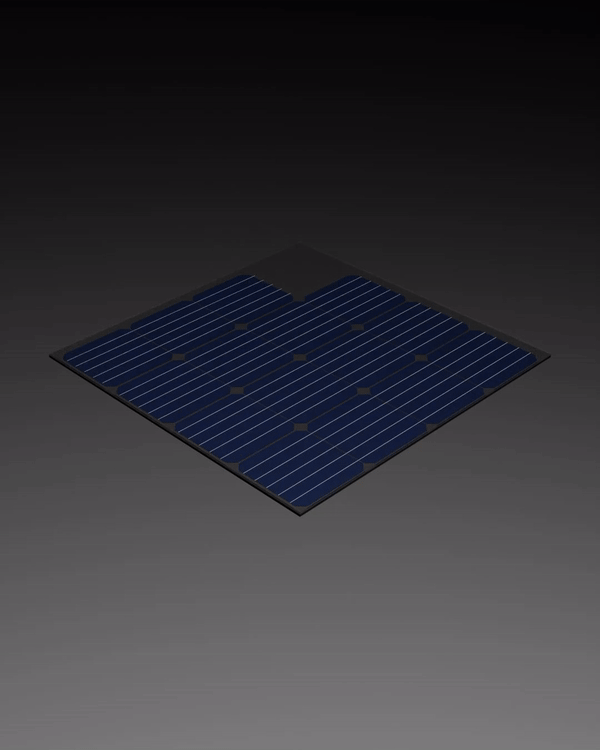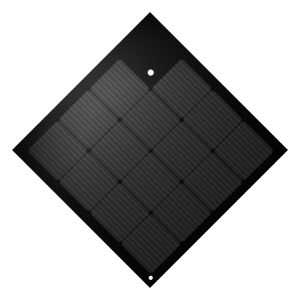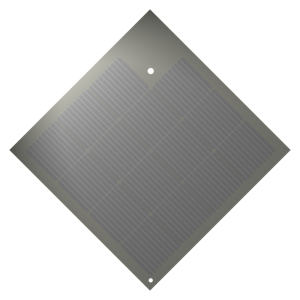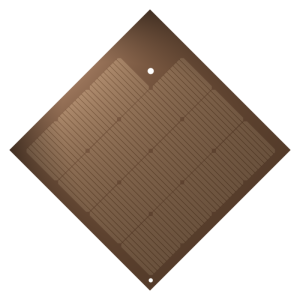At a time when sustainability is becoming increasingly important, innovative solutions for energy production are essential. Solar tiles not only offer a highly efficient method of generating solar energy but also impress with their aesthetic integration into architecture. But how exactly are these solar tiles constructed, and what makes them so special? In this blog post, you’ll learn all about the structure and technical advantages of these modern solar modules — and why they could revolutionize your roof in many ways.
Structure of a solar tile
A roof-integrated solar system replaces the external building envelope, which in most cases consists of tiles or other roofing materials. To maintain the benefits of a tiled roof, it is optimal to use frameless solar modules. This reduces the risk of dirt accumulation on the solar system and enhances the aesthetic appeal of the building. Solar tiles are usually glass-glass solar modules, representing a modern version of traditional solar panels. This construction offers exceptional robustness, ensuring greater durability.
Here is a detailed overview of the structure and components of a solar tile:

Front protective glass
The front protective glass is made of tempered, textured solar glass that shields the underlying solar cells from environmental influences such as rain, snow, and hail. The glass is highly transparent and minimizes reflections to allow a maximum amount of sunlight to reach the solar cells. Many modern solar modules use a special anti-reflective coating to further increase efficiency. At the same time, the reflected sun rays are directed in multiple directions to reduce potential glare for neighbors.
Solar cells
Between the two layers of glass are coated solar cells, which form the heart of the solar module. These are typically made of high-purity silicon, which converts sunlight into electrical energy through the photovoltaic effect. The cells are embedded in a transparent plastic layer that protects them and improves heat dissipation, as overly hot solar cells produce less electricity than cooler ones. The design of the cells can vary to meet different performance requirements. SunStyle modules use PERC cells to achieve high efficiency and longevity. PERC stands for “passivated emitter and rear cell,” which means a cell with a passivated emitter and rear side. PERC solar cells achieve an efficiency rate of over 20%.
Back glass
The back glass is just as robust as the front glass and contributes to the overall stability of the solar module. It serves as an additional protective layer for the solar cells, shielding them from physical and chemical influences. With the absence of a conventional frame, the entire module is stabilized by the glass itself, which reduces potential weak points and increases resistance to extreme weather conditions. The frameless design also enhances the aesthetic appearance of the solar module by providing a seamless and modern look.
Encapsulation and sealing
The encapsulation and sealing of the solar cells are crucial for the longevity and performance of the solar module. Between the two layers of glass and the cells is a layer of EVA (ethylene-vinyl acetate). This plastic layer protects the cells from moisture, dust, and mechanical stress. EVA provides long-term sealing and improves the module’s durability.
Junction box
The junction box is located at the bottom of the solar tile and contains the electronic connections, as well as important protection devices like bypass diodes that guard against overvoltage. The individual solar modules are connected in series via connection cables and plugs. The junction box design varies depending on the manufacturer and model but is always designed to ensure a reliable and safe connection.
Benefits of solar tiles
Conclusion
Solar tiles offer a robust and aesthetically pleasing solution for energy production. With their special double-glass construction, high-quality encapsulation, and frameless design, they provide both technical and visual advantages. Their enhanced durability and efficiency make these modules an attractive option for modern solar projects, especially in building-integrated photovoltaics. If you’re looking for a sustainable and elegant solution for your energy needs, glass-glass solar modules could be just what you need.
Thinking about going solar? Contact us to discuss your project and take the leap together
For more information about SunStyle’s solar roof, visit sunstyle.com
Power your interest in the future of solar roofing by following us:
Instagram @sunstyle_solar
Facebook @sunstylesolar
LinkedIn linkedin.com/company/sunstylesolar
Youtube @youtube channel





